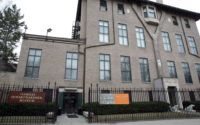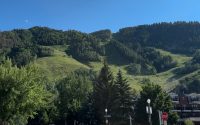Jeffrey Gibson to Represent US at 2024 Venice Biennale, in a Historic First for an Indigenous Artist
In a historic first, Jeffrey Gibson will represent the United States at the 2024 Venice Biennale, marking the only time in the American Pavilion’s 75-year history that an Indigenous artist has done it solo.
Gibson, a member of the Mississippi Band of Choctaw Indians and who is also of Cherokee descent, is known for vibrantly colored paintings, sculptures, and more that often incorporate text, some of it appropriated from pop music. At times, the work edges into abstraction, in an attempt to marry styles borrowed from Western modernism and Native American craft.
Beadwork has figured prominently in his work, as have spray-painting and other techniques. Among his most famous works are sculptural pieces formed from punching bags that he beads in patterns recalling the clothes worn by powwow dancers.
Two curators will work with Gibson on the pavilion: independent curator Abigail Winograd and Kathleen Ash-Milby, a Portland Art Museum curator of Native American art who is a member of the Navajo nation, making her the first Indigenous curator to work on a US Pavilion. They commissioned the pavilion with SITE Santa Fe director Louis Grachos.
“Throughout his career, Jeffrey has challenged us to look at the world differently through his innovative and vibrant work,” Ash-Milby said in a statement. “His inclusive and collaborative approach is a powerful commentary on the influence and persistence of Native American cultures within the United States and globally, making him the ideal representative for the United States at this moment.”
The Portland Art Museum and SITE Santa Fe are the two commissioning institutions. That in itself is a rarity—most US Pavilions have been commissioned by East Coast museums in the Northeast.
This is the second US Pavilion in a row to mark a first. The 2022 one was done by sculptor Simone Leigh, who was the first Black woman ever to stage the pavilion solo. Portions of that pavilion currently figure in an acclaimed survey now on view at the Institute of Contemporary Art, Boston, its commissioning institution.
Gibson’s pavilion comes at a high moment in his career. Having shown previously in editions of the Toronto Biennial of Art, the Whitney Biennial, and Desert X held in the past decade, his work is now on view at CCS Bard’s Hessel Museum of Art in Upstate New York, where it figures in a show called “Indian Theater,” about performative practices and Indigenous aesthetics. Gibson is also due to a release a book next month that he edited called An Indigenous Present, which is being billed as a survey of contemporary Indigenous art.



